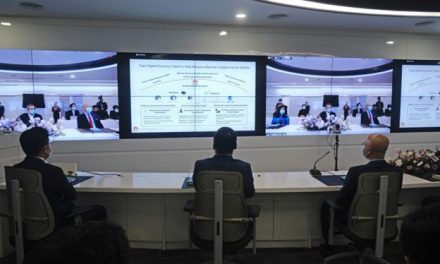By: Dr Gu Manli, Dr Karen Tsen Mung Khie & Professor Dr Goh See Kwong
Step into a modern office and the difference is immediately apparent. The neat rows of identical cubicles that once symbolised efficiency have given way to flexible zones such as quiet rooms for focus, lounges for collaboration, and open spaces for conversation.
Employees move fluidly between them according to what their day demands. This is Activity-Based Working (ABW), a design philosophy that reflects a deeper evolution in how we view work itself.
Step into a modern office and the difference is immediately apparent. The neat rows of identical cubicles that once symbolised efficiency have given way to flexible zones such as quiet rooms for focus, lounges for collaboration, and open spaces for conversation.
Employees move fluidly between them according to what their day demands. This is Activity-Based Working (ABW), a design philosophy that reflects a deeper evolution in how we view work itself.
From presence to purpose
For much of the twentieth century, the office was built around visibility and control. Productivity was often equated with presence. When the pandemic redefined the relationship between work and place, that assumption began to fade. Hybrid and remote models proved that performance was not bound to a desk. The purpose of the office shifted from a site of supervision to a space of connection, a hub for collaboration, creativity, and culture.
Across Asia, this shift is accelerating. Organisations are re-examining not just where people work, but why they come together. The answer increasingly lies in flexibility and wellbeing. ABW gives employees freedom to choose settings that best suit their tasks, whether brainstorming as a team or concentrating alone. Yet while the concept is appealing, its success depends on more than open plans and stylish furniture. It rests on the thoughtful alignment of design, technology, and culture.
With many professionals now able to work effectively from anywhere, organisations are rethinking how to use office space more intelligently. Rather than maintaining fixed workstations, many are embracing flexible layouts that reflect new work patterns and employee expectations.
Designing around human behaviour
Intentional design starts with understanding the diversity of work modes. Analytical tasks require calm and privacy, while creative work thrives in interactive, open settings. The best offices provide both, allowing employees to shift seamlessly between modes. This balance supports performance and mental wellbeing, reducing fatigue from either overstimulation or isolation.
Technology plays an equally critical role. In a flexible workspace, connectivity is the invisible infrastructure that enables mobility. When systems lag or digital tools fail, the freedom ABW promises quickly turns to frustration. But when technology works intuitively, through fast networks, wireless sharing tools, and seamless access, employees experience a sense of flow that keeps them productive wherever they are. In the age of hybrid work, ease of connection is the new measure of efficiency.
The most human aspect of workplace design is belonging. As employees move between zones, personal anchors can easily disappear. The absence of an assigned desk may seem minor, yet it can affect how attached people feel to their organisation.
Successful ABW environments counter this by fostering belonging through culture and community. Rituals, team spaces, and opportunities for informal interaction remind people that while their seats may change, their sense of purpose does not. Belonging cannot be designed into the floor plan, it must be nurtured through leadership.
Leadership determines whether flexible work empowers or unsettles. Many Asian organisations still equate visibility with productivity. ABW challenges this notion, calling for trust, the confidence that employees will deliver results even when they are not constantly observed. Effective leaders set clear goals, communicate expectations, and measure outcomes rather than attendance. When trust replaces control, accountability follows naturally.
A clear flexible-work policy is also vital. Employees should know when physical presence is needed and how collaboration fits into hybrid arrangements. Clarity removes the uncertainty that often accompanies flexible work. When policies are transparent and fair, they strengthen both morale and organisational rhythm.
Co-creating the future workplace
Workplaces are most successful when designed with employees, not for them. Involving staff through workshops, surveys, or pilot projects ensures that the final design reflects real needs, not assumptions. It also builds ownership, a crucial ingredient in any cultural transformation. People are more likely to embrace new spaces when they have helped shape them.
Ultimately, ABW is not about optimising space but about aligning environment with purpose. The workplace of the future will be adaptive and human-centred, a space that supports focus, collaboration, and wellbeing in equal measure. Offices of tomorrow will not simply house employees but energise them, offering the freedom to choose, the tools to perform, and the culture to belong. For ABW to succeed sustainably, organisations must shift from attendance-based expectations to performance-based outcomes.
When design meets need, work becomes more than a daily routine. It becomes an experience that reflects trust, empathy, and the evolving rhythm of modern life.
** Dr Gu Manli and Dr Karen Tsen Mung Khie are Senior Lecturers at the School of Management and Marketing, Faculty of Business & Law, Taylor’s University. Both are also members of the Mental Health and Well-being Impact Lab and the Centre for the Future of Work at the University
** Professor Dr Goh See Kwong is Deputy Head (Education) at the School of Business, Monash University Malaysia











